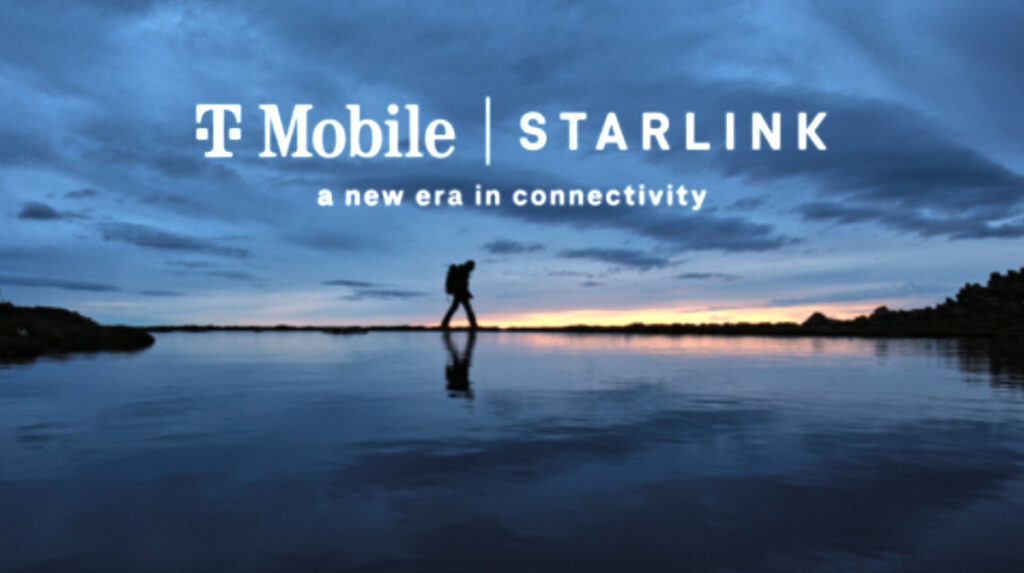
T-Mobile (NASDAQ: TMUS) has introduced T-Mobile Starlink—now in public beta, this breakthrough service, developed in partnership with Starlink, uses satellite and mobile communications technology to help keep people connected in the more than 500,000 square miles of the country unreached by any carrier’s Earth-bound cell towers, and that’s nearly the size of two Texases!
T-Mobile Starlink uses specially configured satellites with Direct-to-Cell (D2C) capabilities orbiting the Earth 200+ miles up in space and traveling at more than 17,000 miles per hour to deliver cell phone signals—text messages for now with picture messages, data and voice calls coming later—to and from locations traditional cell towers can’t reach (aka mobile dead zones).
The beauty of the service is its simplicity: users don’t need to do anything out of the ordinary. When a user’s cell phone gets out of range of a cell tower, the phone automatically connects to the T-Mobile Starlink network. No need to manually connect. Messages are sent and received just as they are today on a traditional network, even group texts and reactions. And it works on most smartphones from the last four years. It’s not limited to a few smartphones or operating systems.
And to double down on keeping all people connected, T-Mobile Starlink also broadcasts Wireless Emergency Alerts (WEAs) nationwide to anyone in range of the signal and with a compatible device.
Satellite-based WEA service helps ensure everyone—even outside of terrestrial coverage, as long as they are in range of a T-Mobile Starlink satellite—can receive critical, potentially life-saving messages directly to their phone. Whether in remote areas like hiking trails or in areas impacted by severe weather or by natural disasters, more people now have access to the WEA broadcast when they need it most.
The beta is free until July, at which point T-Mobile Starlink will be included at no extra cost on Go5G Next (including variations like Go5G Next 55+), T-Mobile’s best plan. Business customers will also get T-Mobile Starlink at no extra cost on Go5G Business Next, first responder agencies on T-Priority plans and other select premium rate plans. T-Mobile customers on any other plan can add the service for $15/month per line.
T-Mobile is giving AT&T and Verizon customers the opportunity to try out T-Mobile Starlink satellite service on their existing phones. With T-Mobile Starlink, every compatible smartphone can turn into a satellite phone—no fancy equipment needed. During the beta period, Verizon and AT&T customers can experience T-Mobile Starlink text messaging for free, and once the service launches in July, it will be available for $20/month per line.
“T-Mobile Starlink is the first and only space-based mobile network in the US that automatically connects to your phone so you can be connected even where no cellular network reaches. It’s a massive technical achievement and an absolute game changer for ALL wireless users,” said Mike Sievert, President and CEO, T-Mobile. “We’re still in the early days — I don’t want to over hype the experience during a beta test — but we’re officially putting ‘no bars’ on notice. Dead zones, your days are numbered at the Un-carrier.”
More details and consumer registration can be found at this direct link…
Businesses and first responder agencies can register at this direct link…
A Vision for Universal Coverage
